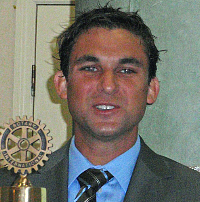
"I’ve seen the future, and it is bright," said Michael Saperstein, director of government affairs for the Personal Communications Industry Association (PICA) in Washington, D.C. Among the unique challenges the island presents, he said are:
- clutter – trees, billboards, obstructions;
- topography – the hills;
- capacity – available bandwidth.
He said strategies such as collocation — situating towers on existing infrastructure — private entities working together, produce effective results. "You will be pleased to see what 3G (third generation) and even 4G offers for the future," Saperstein said.
He said by 2020, "the majority of Americans will be using wireless, no land lines."
Saperstein develops policy for the wireless infrastructure industry on all levels – federal, local, state, territorial. PICA works with government agencies such as the Federal Communications Commission (FCC) and other regulatory agencies, including local ones, to ensure the communications industry has a voice.
Since St. Thomas has to accommodate tourists as well as residents, Saperstein said, "It’s crucial to be able to give tourists good service." A Rotary member emphasized the problem, pointing out that tourists using Verizon Wireless now become frustrated, with its marginal reception here.
Members asked about the island’s dead zones, a perennial problem. Though holding a cell phone while driving is illegal, most users don’t use handheld devices. Those "dead zones" pose a problem not only for communication, but for public safety as well, members noted.
The perennial problem of constructing enough towers to adequately service the community is not unique to St. Thomas, Saperstein said. Everyone wants cell access, but no one wants it "in their backyard."
Tower construction begun on St. Thomas without public input and little notice last year led to an outcry which resulted in a six-month moratorium called by Department of Planning and Natural Resources Commissioner Robert Matheson on tower construction while new regulations were drafted. The moratorium expired last month.
DPNR held three public hearings in June to get input into the final regulations. Saperstein was invited to meet with DPNR representatives later Tuesday to review the results.
Speaking after that meeting, Saperstein said, "We hammered out a good regulation," he said.
"I’m excited. It’s a good balance with limiting the amount of height, and providing good wireless coverage."
He said, "The bright spot for the future, is that the steps that we worked on today will allow the Virgin Islands to take full advantage of changes in wireless broadband that is coming, though that’s still a few years down the road."
Once finished with the regulations, DPNR will send them to Gov. John deJongh Jr. and on to the Legislature, which will hold another round of public hearings.





